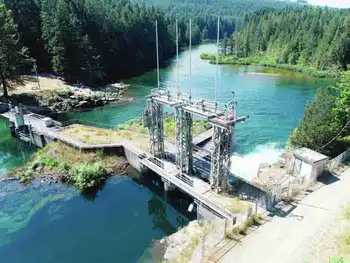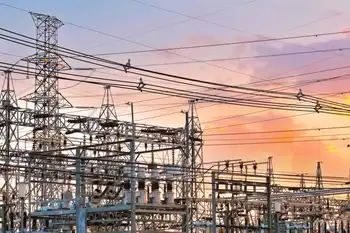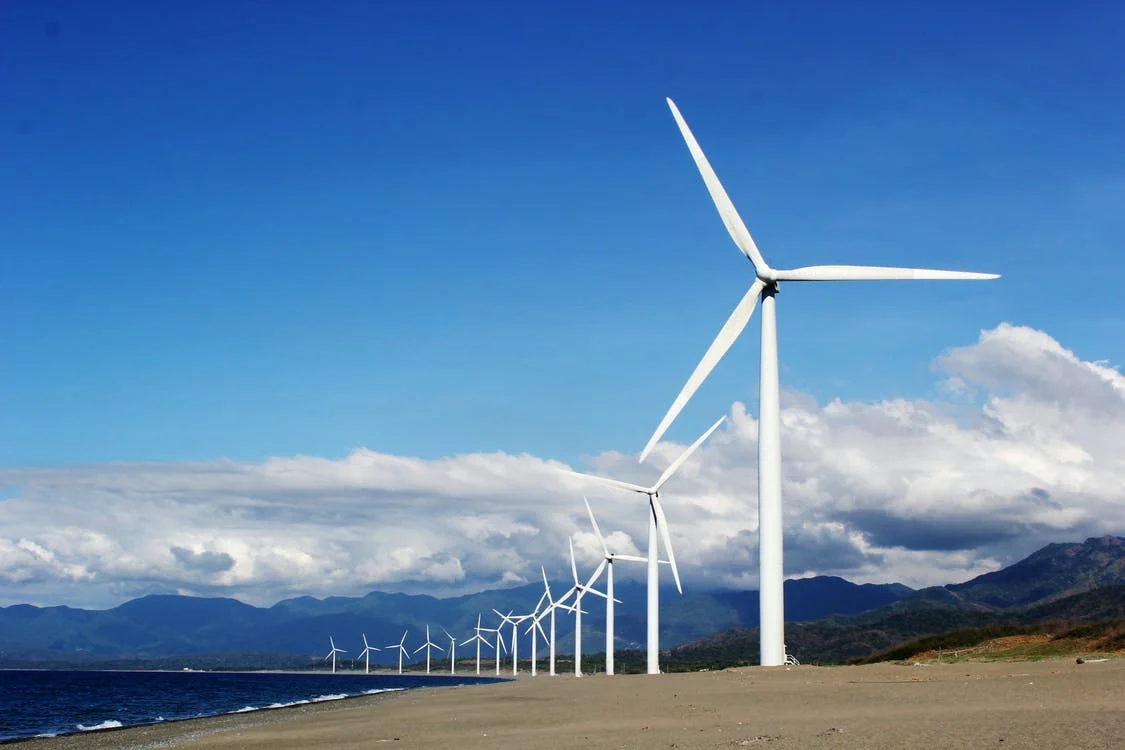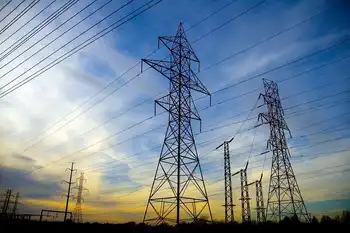Proposed power line generates opposition
And Wisconsin is next.
The proposed 345-kilovolt lines, on towers as high as 150 feet placed every 1,000 feet, would run from the Twin Cities to Rochester, Minn., and then to substations in La Crosse or Holmen.
The CapX2020 project, estimated to cost $1.7 billion in 2007 dollars, is comprised of four power lines, including one that would cross the Mississippi River at one of three cities — Alma, Wis.; Winona, Minn.; or La Crescent, Minn.
Two additional 345-kilovolt lines — one from Fargo, N.D., to the Twin Cities and one from Brookings, S.D., to Monticello, Minn., as well as a 230-kilovolt line from Bemidji, Minn., to Grand Rapids, Minn. — are included in the project, proposed by 11 utilities. Xcel Energy and Great River Energy are applying for approval to regulatory agencies on behalf of the 11.
But critics question the need for the massive lines and say the public hasnÂ’t been properly informed about the proposal.
The Tribune today looks at the components of the project, which could be in operation by 2013 or 2014, and talked both to proponents and opponents.
Tim Carlsgaard, who works for the 11 utilities as communications and public affairs manager for CapX2020, said energy use across the region continues to grow, prompting the push to deliver reliable, affordable energy. In Minnesota alone, he said, energy use has doubled since 1980.
The upgraded lines would meet future needs, he said, and revamp a transmission system that hasnÂ’t had a major overhaul since the 1970s.
Carlsgaard said the utilities arenÂ’t going to build more lines than necessary.
“I think we have a very strong case,” Carlsgaard said.
Paula Maccabee, a St. Paul, Minn., attorney representing the CitizenÂ’s Energy Task Force in the Public Utilities Commission hearings in Minnesota, said the utilities have overstated the demand for the line coming to La Crosse.
“The utilities have been stacking the deck to make it look like this project is needed,” Maccabee said, “but once you get behind the data, you see how it’s not true.”
If the Twin Cities-Rochester-La Crosse line were not built, she said, power company officials have testified that enhancements to the current transmission lines would not be needed until 2026 or 2028 in Rochester.
“And that’s without studying the conservation aspects,” Maccabee said. “The benefits are not clear and certainly have been exaggerated, and the harms are unavoidable.”
Not so, said Carlsgaard. “We’re not going to scare people and say, ‘(Do this) by 2010 or 2015 or your lights are going to go off,’” he said. “That’s irresponsible. We’ve proven in everything we’ve put forward there’s a need for these lines.”
“If we go to more renewables, we don’t need this expensive high-voltage system,” Minnesota state Rep. Ken Tschumper, DFL-La Crescent, said during a forum he organized July 31 at La Crescent’s American Legion for those concerned with CapX2020.
“Renewable systems can feed into the grid as well,” he said.
ItÂ’s also the law, Tschumper said, as Minnesota passed a renewable energy standard in 2007 mandating 25 percent of all electricity used in the state be generated from renewable energy sources by 2025.
Renewables are a very important part of meeting future resource needs, Xcel spokesman Brian Elwood said, but the company still needs sufficient transmission lines in order to get the resources to the customers.
Eleven percent of XcelÂ’s electricity now is generated from renewable sources, Elwood said, and by 2025 Xcel expects 25 percent to 30 percent of its electricity will come from wind energy, along with other renewable resources such as biomass, hydropower, and burning garbage and wastewood.
Patrick Caffrey, president of Friends of Trempealeau Refuge, said heÂ’s not debating the need for the project, just the location.
“We’re encouraging the utilities to choose routes that minimize the length of lines in the river valley,” Caffrey said.
Caffrey, former director of public works for the city of La Crosse, attended CapX2020Â’s open house in May at the Centerville Community Center.
The Mississippi River is a major flyway for migrating birds and bats, he said, and heÂ’s concerned how wildlife will be affected by the lines spanning the waterway.
The proposed crossing also could jeopardize the areaÂ’s scenic corridor and harm tourism, he said.
“If they cross at Alma and follow it along the river valley to La Crosse or Holmen, that would be the worst option,” he said.
“When these lines are built, we go above and beyond how we protect the environment during the construction process,” Elwood said.
That includes working with the Department of Natural Resources in both states, as well as the U.S. Fish and Wildlife Service, which oversees the refuge.
“It’s clear that a power line causes harm,” Maccabee said. “What the World Health Organization says is they’re considering electromagnetic fields as a possible carcinogen. There’s a consistent association with EMFs and childhood leukemia.”
There isnÂ’t enough laboratory evidence to classify EMFs as a definite carcinogen, she said, but research such as the BioInitiative Report shows reason for concern.
“There is substantial evidence, and at the very least it should cause people to be cautious,” she said.
But Carlsgaard, communications and public affairs manager for CapX2020, counters that the lines will be far enough removed from the public. Towers 150 feet high carrying 345-kilovolt lines are built with a 150-foot right of way, Carlsgaard said.
By law, they must use an existing crossing, and CapX2020 aims to keep them away from residential areas, he said.
“We have people working on health issues, following the debates and looking at the studies,” Carlsgaard said. “We’re very involved.”
Added Chuck Thompson, manager of siting and regulatory affairs at Dairyland Power Cooperative: “There has been a significant amount of research done over the last 25 years, and today there hasn’t been a correlation between electromagnetic fields and cancer.”
“If we’re going to meet the Wisconsin target of renewables, we’re going to need this line,” said Wisconsin Assembly Speaker Mike Huebsch, R-West Salem. “We need the wind power that Minnesota has to offer.”
The Wisconsin target is 25 percent renewable energy by 2015, Huebsch said. That makes transmission lines — such as the one proposed for the La Crosse area — necessary, he said.
“It’s a key component to our reaching our renewable energy portfolio and targets in the years to come,” he said.
Pat Morrison, who moved to La Crescent in 2005 after living outside Sacramento, Calif., for more than 20 years, said she’s lived through “phenomenal” expansion on the coast.
“With that growth, they needed more water, they needed more electricity — all of that,” Morrison said.
Morrison experienced power brownouts, blackouts and mandated times for doing things such as washing clothes, she said.
She doesnÂ’t oppose the project at all, she said, and doesnÂ’t see the reason for all the uproar.
“I think it will be done very carefully. They have to in this day and age,” she said.
Establishing such large transmissions lines in Minnesota is a two-step process, Thompson said.
“One is to go through a hearing process on the need,” he said. “The second, if they approve the project, then we come back and we’re talking just about routes.”
Notices went out in July 2007 to 72,000 Minnesota landowners and local officials, said Carlsgaard. In August 2007, 2,050 Wisconsin landowners were notified about the proposal.
The Minnesota Department of Commerce then held 10 public meetings in December 2007, he said.
The Minnesota Public Utilities Commission convened an evidentiary hearing in July that will conclude this month.
In addition, more than 100 informational meetings were conducted in 2006 and 2007 for the media and public officials in South Dakota, North Dakota, Minnesota and Wisconsin.
By May 2008, 60 open houses and 36 routing work group meetings had been open to the public to attend, at Minnesota sites such as Winona, Wabasha, Alexandria, Marshall, Lakeville, Fergus Falls, Red Wing, Rochester and Cannon Falls, as well as La Crosse and Centerville in Wisconsin, Carlsgaard said.
“None of this is required by the Minnesota regulatory process,” Carlsgaard said. “And, we still have to go through the whole Wisconsin regulatory process.”
But opponents of the project still argue that not all the residents in areas along the corridor were properly informed.
Once the evidentiary hearing is through and public comments no longer are accepted, further meetings in Minnesota will focus on determining the route rather than determining need, opponents say.
Both sides of the debate strongly encourage Minnesota residents to submit written comments to Minnesota Administrative Law Judge Beverly Heydinger.
Public comments in Minnesota will be accepted until Sept. 26.
“The need and the routing are addressed in one process in Wisconsin,” said Xcel Energy project leader Tom Hillstrom, “and that’s called the certificate of public convenience and necessity.”
Hillstrom said CapX2020 likely will file an application for the certificate in early 2009. He expects the Wisconsin regulatory process of public meetings and hearings on the state certificate to take one to two years before the Public Service Commission rules on the application.
The Minnesota portion of the project would end either in the Winona or La Crescent areas. Crossing the Mississippi at Alma, Wis., or Winona, Minn., would mean continuing the lines to an expanded substation in Holmen or a new substation north of Holmen, Hillstrom said. A La Crescent crossing would lead to a substation in La Crosse.
“The earliest that a route could be approved by the two states is 2010,” Carlsgaard said.
Discussions already are under way between Xcel and American Transmission Co. for a 345-kilovolt line to run east to southeast out of La Crosse, Carlsgaard said.
That line would address energy needs in the 2023 to 2025 time frame, he said.
“There’s going to be more transmission lines. We’ve said that before,” Carlsgaard said. “These are not going to be the last of what we’re going to have to propose.”
La Crescent, Minn., resident Jeremy Chipps, a CitizenÂ’s Energy Task Force member who has vocally questioned the need for new high-voltage lines, successfully brought about a resolution from the La Crescent City Council opposing the lines coming through the city.
“My initial thought when I first came upon this was, ‘Where would the line be going after it comes to La Crosse?’ ” Chipps asked.
Xcel concedes that with a $1.7 billion price tag for all four lines, the CapX2020 project will affect Xcel customersÂ’ rates. Just what those rates will be has not been made clear, said Paula Maccabee, attorney for the CitizensÂ’ Energy Task Force.
“People have a right to have at least a ballpark estimate on how much this is going to cost,” Maccabee said.
Once the certificate of need has been approved, Xcel can start charging customers, said Tim Carlsgaard, communications and public affairs manager for CapX2020. The costs escalate as the project reaches what he called “the height of construction,” he said, “when we’re spending the most money.”
By 2013 to 2015, customers likely will pay an additional $2.25 per bill for the project, Carlsgaard said. He estimated the cost of the 345-kilovolt, double-circuit line from the Twin Cities to La Crosse at $389 million to $432 million in 2007 dollars.
The request Xcel made to the Wisconsin Public Service Commission in August for an overall 8.6 percent rate increase is separate from what would be needed for the CapX2020 project.
“It (the recent rate increase) includes costs associated with the King to Arpin (power) line from Stillwater, Minn., the main 345-kilovolt line stretching across Minnesota to Wisconsin,” Xcel spokesman Brian Elwood explained.
According to the chairman of the Federal Energy Regulatory Commission, about 200,000 miles of transmission lines now are woven across the United States, said Tim Carlsgaard, communications and public affairs manager for CapX2020.
The regional grid that serves the four proposed CapX2020 power lines is about 95,000 miles and includes 15 states, as well as Manitoba, Canada, he said.
The certificate of need filed by Xcel Energy and Great River Energy estimates the Twin Cities to La Crosse line would extend about 150 miles.
It likely would be a single-pole, double-circuit, 345-kilovolt line, said Carlsgaard.
While project critic Carol Overland claimed the lines will pave the way for construction of new coal plants, Xcel spokesman Brian Elwood said the opposite is true. No new coal plants are scheduled to be built, he said, because of this project.
“This is the first time this approach has been taken in building transmission lines. It’s truly unique,” Elwood said.
Overland sees the motive as a simple one: The utilities want wholesale power moving across the massive grid because, unlike retail power, itÂ’s not regulated.
“They want these (power lines)... so they can get the money,” Overland said.
ThatÂ’s not true, said Jim Alders, XcelÂ’s director of regulatory administration. In fact, he said, there are two layers of regulations for wholesale transactions between utilities, and retail transactions between utilities and their customers.
“All power transactions are regulated,” said Alders. “Some are regulated by the federal government and some are regulated by the state.”
Those same state regulators control when a power plant is constructed, and where and what it will be manufacturing.
“State regulators are going to pick the fuel type,” Alders said. “Regardless of what type they pick, we need the transmission network.”
Carl Dombek, spokesman for the Midwest Independent Transmission System Operator — a nonprofit organization controlling transmission on the high-voltage grid — said many companies are taking a “wait-and-see” approach to proposing new coal plants.
With a significant potential for federal climate-change legislation in the near term, utilities are waiting for possible new restrictions.
Dombek, who said thereÂ’s definitely a need for more transmission based on more energy being consumed, said the CapX2020 lines are being proposed in such a way as to facilitate the use of renewables within the grid.
Related News

Pickering NGS life extensions steer Ontario towards zero carbon horizon
TORONTO - In a pivotal shift last month, Ontario Power Generation (OPG) revised its strategy for the Pickering Nuclear Power Station, scrapping plans to decommission its six remaining reactors. Instead, OPG has opted to modernize four reactors (Pickering B Units 5-8) starting in 2027, while Units 1 and 4 are slated for closure by the end of the current year.
This revision ensures the continued operation of the four 515 MW Canada Deuterium Uranium (CANDU) reactors—originally constructed in the 1970s and 1980s—extending their service life by at least 30 more years. These units are instrumental in generating 14% of Ontario’s electricity,…





